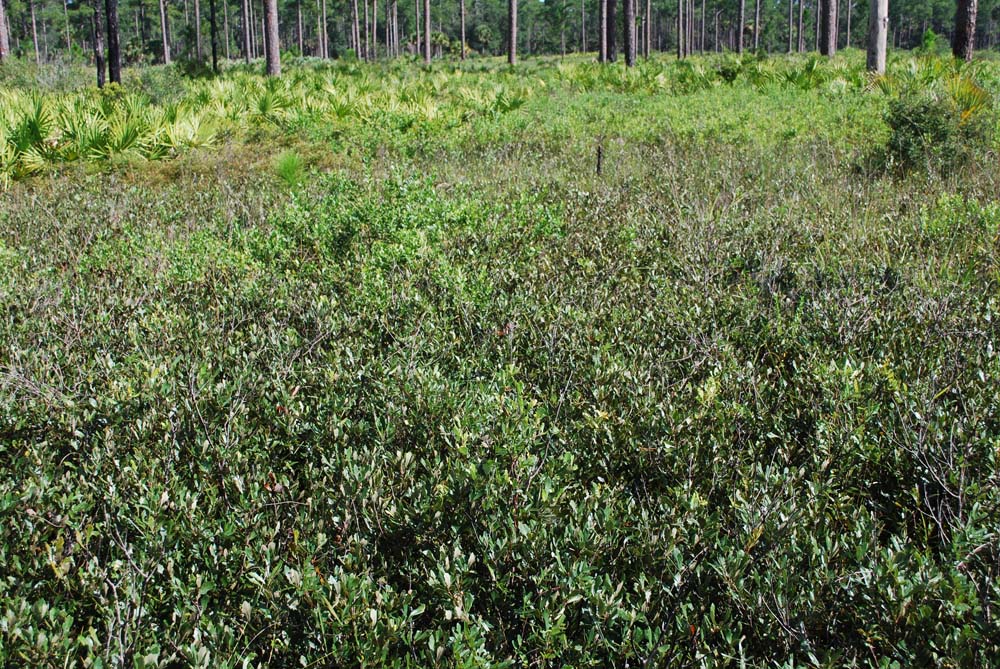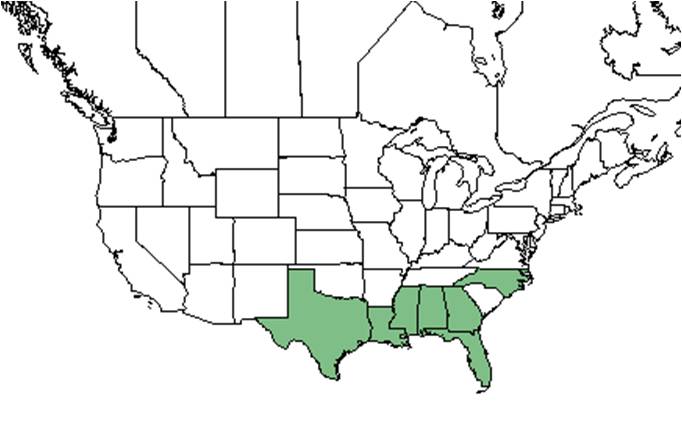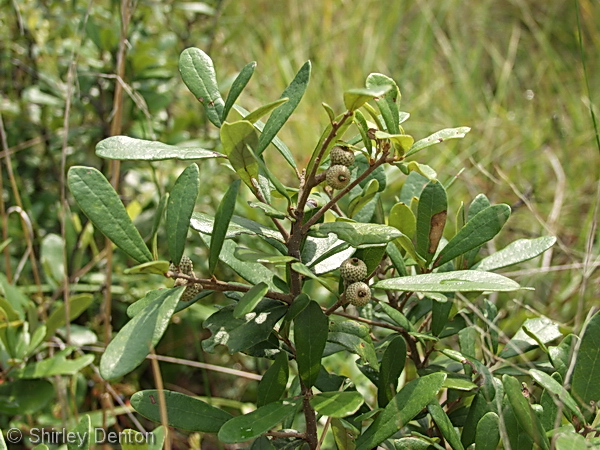Difference between revisions of "Quercus minima"
Juliec4335 (talk | contribs) |
(→Pollination) |
||
| Line 38: | Line 38: | ||
===Pollination=== | ===Pollination=== | ||
| − | The following Hymenoptera families and species were observed visiting flowers of ''Quercus minima'' at Archbold Biological Station: <ref name="Deyrup 2015">Deyrup, M.A. and N.D. 2015. Database of observations of Hymenoptera visitations to flowers of plants on Archbold Biological Station, Florida, USA.</ref> | + | The following Hymenoptera families and species were observed visiting flowers of ''Quercus minima'' at Archbold Biological Station:<ref name="Deyrup 2015">Deyrup, M.A. and N.D. 2015. Database of observations of Hymenoptera visitations to flowers of plants on Archbold Biological Station, Florida, USA.</ref> |
Apidae: ''Apis mellifera'' | Apidae: ''Apis mellifera'' | ||
Revision as of 14:00, 30 March 2021
| Quercus minima | |
|---|---|

| |
| Photo by Wayne Matchett, SpaceCoastWildflowers.com | |
| Scientific classification | |
| Kingdom: | Plantae |
| Division: | Magnoliophyta - Flowering plants |
| Class: | Magnoliopsida – Dicotyledons |
| Order: | Fagales |
| Family: | Fagaceae |
| Genus: | Quercus |
| Species: | Q. minima |
| Binomial name | |
| Quercus minima (Sarg.) Small | |

| |
| Natural range of Quercus minima from USDA NRCS Plants Database. | |
Common names: Dwarf live oak, Minimal oak
Contents
Taxonomic notes
Description
A description of Quercus minima is provided in The Flora of North America.
Distribution
Ecology
Habitat
Q. minima responds negatively to soil disturbance by roller chopping in Northwest Florida sandhills.[1] It also responds negatively to chopping in South Florida saw palmetto-pinleand communities[2] and to to soil disturbance by disking, bedding, and planting slash pines in North Florida flatwoods.[3]
Quercus minima is frequent and abundant in the Xeric Flatwoods community type and is an indicator species for the North Florida Mesic Flatwoods community type as described in Carr et al. (2010).[4]
Phenology
Q. minima has been observed to flower from March to May and in September with peak inflorescence in April.[5]
Pollination
The following Hymenoptera families and species were observed visiting flowers of Quercus minima at Archbold Biological Station:[6]
Apidae: Apis mellifera
Colletidae: Colletes brimleyi
Conservation and management
Cultivation and restoration
Photo Gallery
Fruit of Quercus minima Photo by Shirley Denton (Copyrighted, use by photographer’s permission only), Nature Photography by Shirley Denton
References and notes
- ↑ Hebb, E.A. (1971). Site Preparation Decreases Game Food Plants in Florida Sandhills. The Journal of Wildlife Management 35(1):155-162.
- ↑ Moore, W.H. (1974). Effects of Chopping Saw-Plametto-Pineland Threeawn Range in South Florida. Journal of Range Management 27(2):101-104.
- ↑ Schultz, R.P. and L.P. Wilhite. (1974). Changes in a Flatwoods Site Following Intensive Preparation. Forest Science 20(3):230-237.
- ↑ Carr, S.C., K.M. Robertson, and R.K. Peet. 2010. A vegetation classification of fire-dependent pinelands of Florida. Castanea 75:153-189.
- ↑ Nelson, G. PanFlora: Plant data for the eastern United States with emphasis on the Southeastern Coastal Plains, Florida, and the Florida Panhandle. www.gilnelson.com/PanFlora/ Accessed: 13 DEC 2016
- ↑ Deyrup, M.A. and N.D. 2015. Database of observations of Hymenoptera visitations to flowers of plants on Archbold Biological Station, Florida, USA.
